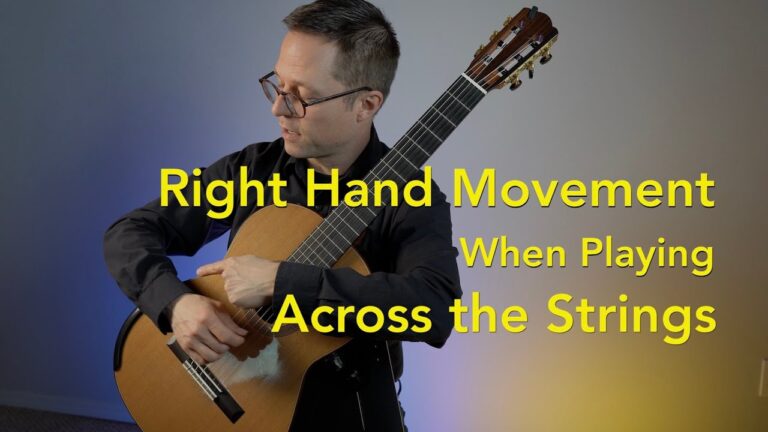Here are a few ways to practice your scales on guitar. The lesson are free to watch and you can apply these tips to any scale but the examples in the video come from my 20 Favorite Exercises for Classical Guitar (PDF/ Notes/ TAB). These exercises, No. 11, 12, and 13 are all great ways for beginner and intermediate guitarists to vary the way they practice scales in order to become versatile as well as find weak points to improve. You can also check out my other books: Major Scales for Classical Guitar or my large book in notation only Classical Guitar Technique: Essential Exercises, Scales, & Arpeggios if you don’t know your basic major scale patterns.
These are extra ways to improve your scales but make sure to also practice with all finger combinations in the right hand such as alternating i-m, m-a, i-a, a-m-i and more. Practice with both rest-stroke and free-stroke and always double check your hand positions.
This is the 1st lesson in a series on how to play and practice scales on guitar. The aim of this exercise on scale destinations is accuracy, precision, and control over every single note in the scale. It is expected that your basic hand positions are secure at this point so now you’re aiming for more quality placement with more relaxation and economy of motion. Treating each note in the scale as a final destination will help you develop even, strong sounding, and confident scales. The goal is to reach each destination with a super high quality and confidence to spare. Make sure you really keep the quality of every note as high as possible.
This is number 2 in a 3 part lesson series on how to play and practice scales on guitar. It’s rare to actually see an entire scale with the same rhythm in your repertoire. Therefore, it makes sense to practice your scales in different ways to become versatile and prepared for repertoire. I find that one of the best things about adding different rhythms to your scales is that it accentuates any problem you might have. For example, in a dotted rhythm exercise a shift in the left hand may occur during the fast rhythm. If you can execute the shift cleanly then you know you need to work on your shift. It’s all about finding weak spots in your technique and then improving them.
If you practice your technique in only one way you might end up playing your pieces without much dynamic contrast or articulations. So, here’s a chance to practice your expressive technique in a controlled setting. Make up your own articulations and dynamics to complement what I’ve provided. You may also wish to experiment with different timbres such as tasto (warm sound: right-hand near the fingerboard) and ponticello (bright sound: right-hand near the bridge). You can make similar changes to the sound by slightly adjusting the angle of the fingers on strings.
YouTube Lesson Links





Hi, when you are playing that C scale what is the fingering for the B before you shift position to the C? Is it the open string B? When shifting position, could you please show how more slowly? With Thanks.
There are many fingering methods you can choose from when it comes to scales. In open position scales we utilize open strings and with closed scales we play everything fretted. In repertoire, we will often mix the methods depending on the context. If a shift is involved an open string can help us navigate the fretboard very smoothly. For this particular post, utilize the concepts I’ve mentioned with any scales you know.